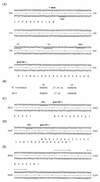Role of the gerI operon of Bacillus cereus 569 in the response of spores to germinants
- PMID: 9852021
- PMCID: PMC107780
- DOI: 10.1128/JB.180.24.6729-6735.1998
Role of the gerI operon of Bacillus cereus 569 in the response of spores to germinants
Abstract
Bacillus cereus 569 (ATCC 10876) germinates in response to inosine or to L-alanine, but the most rapid germination response is elicited by a combination of these germinants. Mutants defective in their germination response to either inosine or to L-alanine were isolated after Tn917-LTV1 mutagenesis and enrichment procedures; one class of mutant could not germinate in response to inosine as a sole germinant but still germinated in response to L-alanine, although at a reduced rate; another mutant germinated normally in response to inosine but was slowed in its germination response to L-alanine. These mutants demonstrated that at least two signal response pathways are involved in the triggering of germination. Stimulation of germination in L-alanine by limiting concentrations of inosine and stimulation of germination in inosine by low concentrations of L-alanine were still detectable in these mutants, suggesting that such stimulation is not dependent on complete functionality of both these germination loci. Two transposon insertions that affected inosine germination were found to be located 2.2 kb apart on the chromosome. This region was cloned and sequenced, revealing an operon of three open reading frames homologous to those in the gerA and related operons of Bacillus subtilis. The individual genes of this gerI operon have been named gerIA, gerIB, and gerIC. The GerIA protein is predicted to possess an unusually long, charged, N-terminal domain containing nine tandem copies of a 13-amino-acid glutamine- and serine-rich sequence.
Figures






References
-
- Barlass, P. J., J. Butten, and A. Moir. Unpublished data.
-
- Clements, M. O., P. J. Barlass, and A. Moir. Unpublished data.
-
- Clements, M. O., P. J. Barlass, C. Houston, and A. Moir. Unpublished data.
Publication types
MeSH terms
Substances
Associated data
- Actions
LinkOut - more resources
Full Text Sources
Molecular Biology Databases

